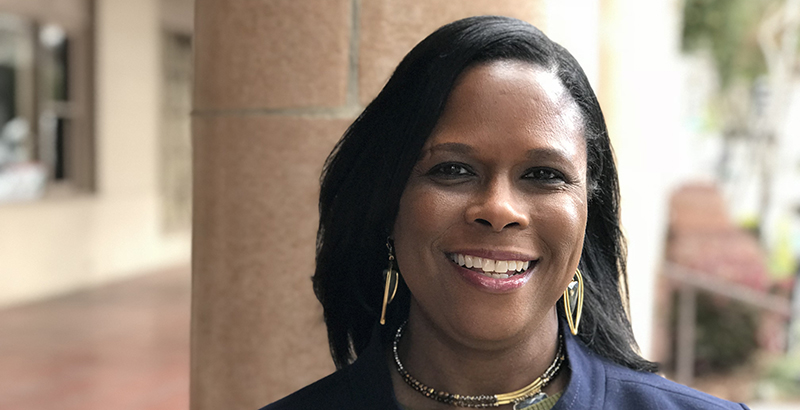An Educator’s View: Dismantling Anti-Blackness and Institutional Racism Is Critical to Student Well-Being. Our Kids Cannot Wait Any Longer

Get essential education news and commentary delivered straight to your inbox. Sign up here for The 74’s daily newsletter.
For many Black people in America, the past year of virtual working and schooling has meant a reprieve from some of the daily traumas that racism visits upon Black life in our country. As a Black woman, my reentry into “regular” life means a return to in-person workplace and personal microaggressions. For Black children, the return to in-person schooling can mean reentering classrooms that are antagonistic to their very identities.
In the wake of a global pandemic and last year’s racial uprisings, schools and districts have implemented school- or district-wide diversity, equity and inclusion training and begun planning additional mental health supports to help students navigate the residual effects of a year of loss. But these measures are simply not enough.
If our public education system does not urgently and directly address the culture that Black students experience in classrooms, it will continue to fail them. In the absence of remote learning, Black students will be exposed to the tangible differences they uniquely feel when they cross the threshold into their classrooms.
Before COVID, Black students were suspended or removed from class at higher rates than non-Black students, they faced racial aggressions around their hairstyles or cultural dress and endured systematic disenfranchisement that barred them from advanced classes attended by their peers. During COVID, Black students’ lack of access to technology was characterized as disengagement, overpolicing continued even in the virtual space and, in many districts, learning loss was most acute for Black students. After COVID, the education sector has a choice: return to the status quo or finally address the anti-Blackness that undergirds these discriminatory outcomes for Black students.
At the Center for Powerful Public Schools, we believe that powerful public schools are essential to an equitable society, economy and democracy. We equip educators with tools to create equitable classroom experiences. Sadly, as executive director of an organization deeply focused on equity, when I try to think of classrooms that fully affirm and support Black children, too few come to mind. Instead, what is true, both in digital and in-person learning environments, is a persistent lack of safety and care for the vast majority of Black students.
However, when I walk into the classrooms at Baldwin Hills Elementary School in Los Angeles, I am able to see, hear and feel first-hand a school that is confronting the status quo. Principal Letitia Johnson-Davis has created an oasis of learning. She and the teachers at Baldwin Hills have built the kind of affirming and holistic classrooms that all Black children deserve.
In culturally affirming, pro-Black classrooms like these, students receive assignments that celebrate who they are, engage with teachers who have deep relationships with them and their families, and are able to see their interests and identities embedded in curricula and school policies. Recent Los Angeles Unified School District parent focus groups revealed that many Black families experience their children’s schools as “indifferent and even hostile to them.” Schools like Baldwin Hills ask the question: What would it feel like for Black students, families and communities to feel revitalized and uplifted in their interactions with schools?
The pathway to classrooms and schools that are free of microaggressions, bias, anti-Blackness and racism is clear. First, schools must require professional development centered on providing culturally relevant and ongoing instruction for current teachers as well as teacher candidates. When businesses have severe incidences of racial bias or prejudice, those businesses require all employees to undergo diversity, equity and inclusion training. Education should be no different. Every part of the school community, including board members and support staff, must be trained in identifying their own biases and assumptions. Engaging in this kind of professional development should be mandatory, and no one should be able to opt out.
Next, schools and districts must develop clear and consistent communication and messaging around the eradication of anti-Black behavior, built in collaboration with parents and community. At the center of this communication must be clear metrics to assess how Black students and families experience the changes that are implemented. Data around how many Black children are suspended or access to advancement opportunities within school buildings must reflect this shift toward equity.
Finally, teachers must learn how to facilitate discussions about racism, discrimination and bias in their classrooms and among their peers in education. Schools and districts must communicate that if teachers are not ready to do what it takes to ensure all children are safe, they should no longer be teachers.
When students return to classrooms in the fall, many — in particular, Black students — will be wrestling with the myriad traumas we’ve faced throughout this year. The environment students enter at this pivotal moment could be life or death for them. Targeting the dismantling of anti-Blackness and institutional racism for classrooms is critical to student well-being. Our kids cannot wait for equity any longer.
Dr. Alicia Montgomery is executive director of the Center for Powerful Public Schools
Get stories like these delivered straight to your inbox. Sign up for The 74 Newsletter

